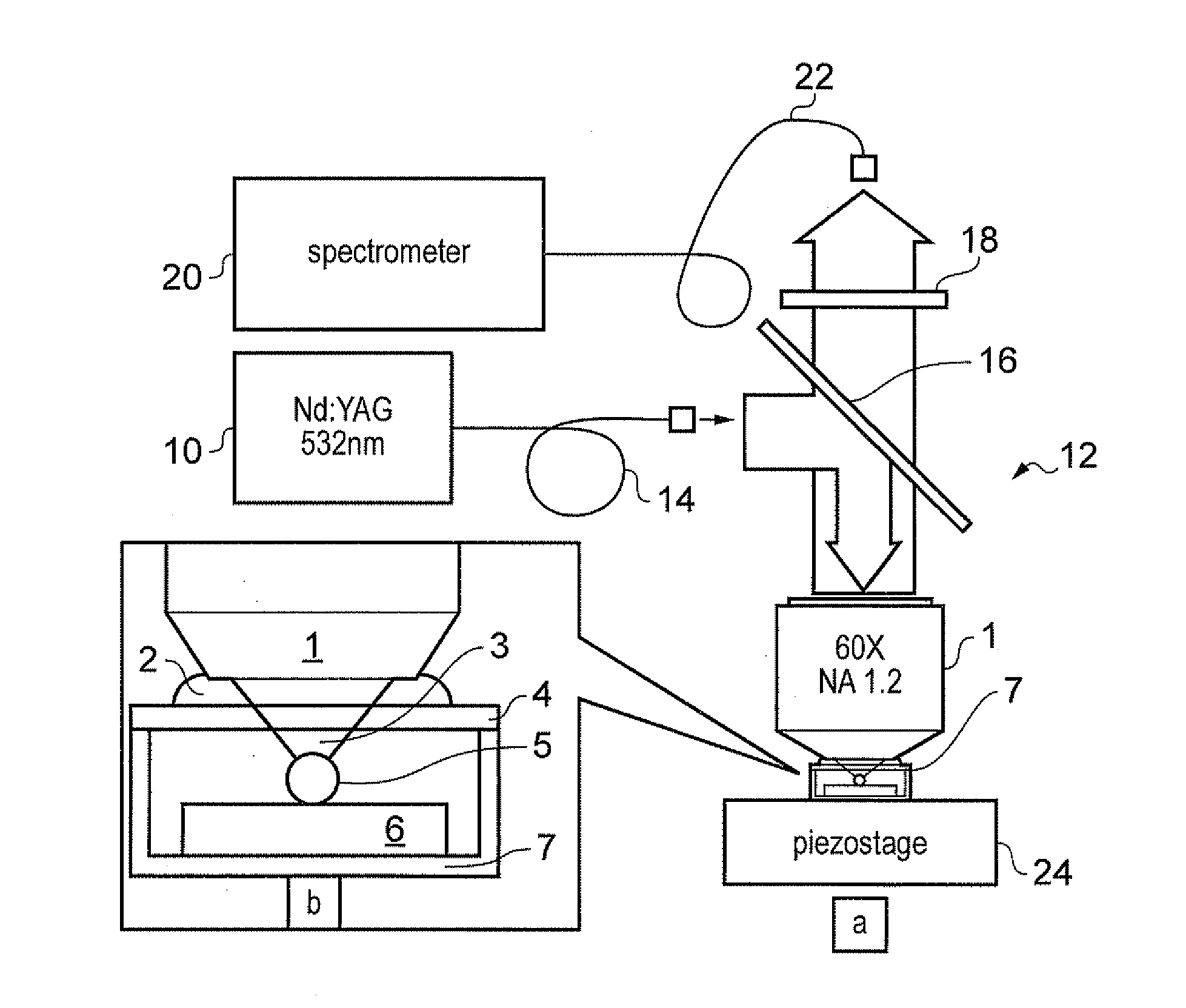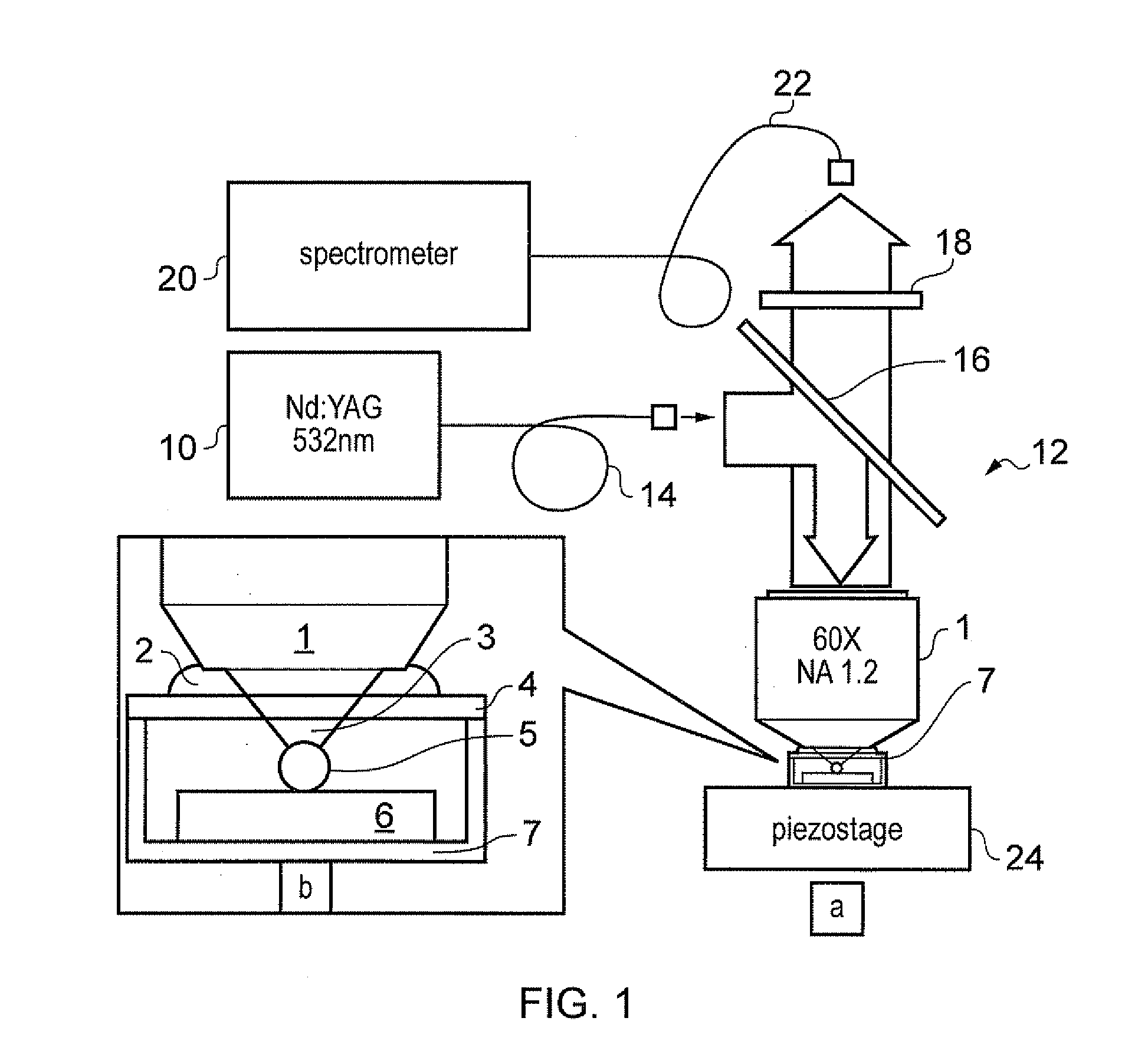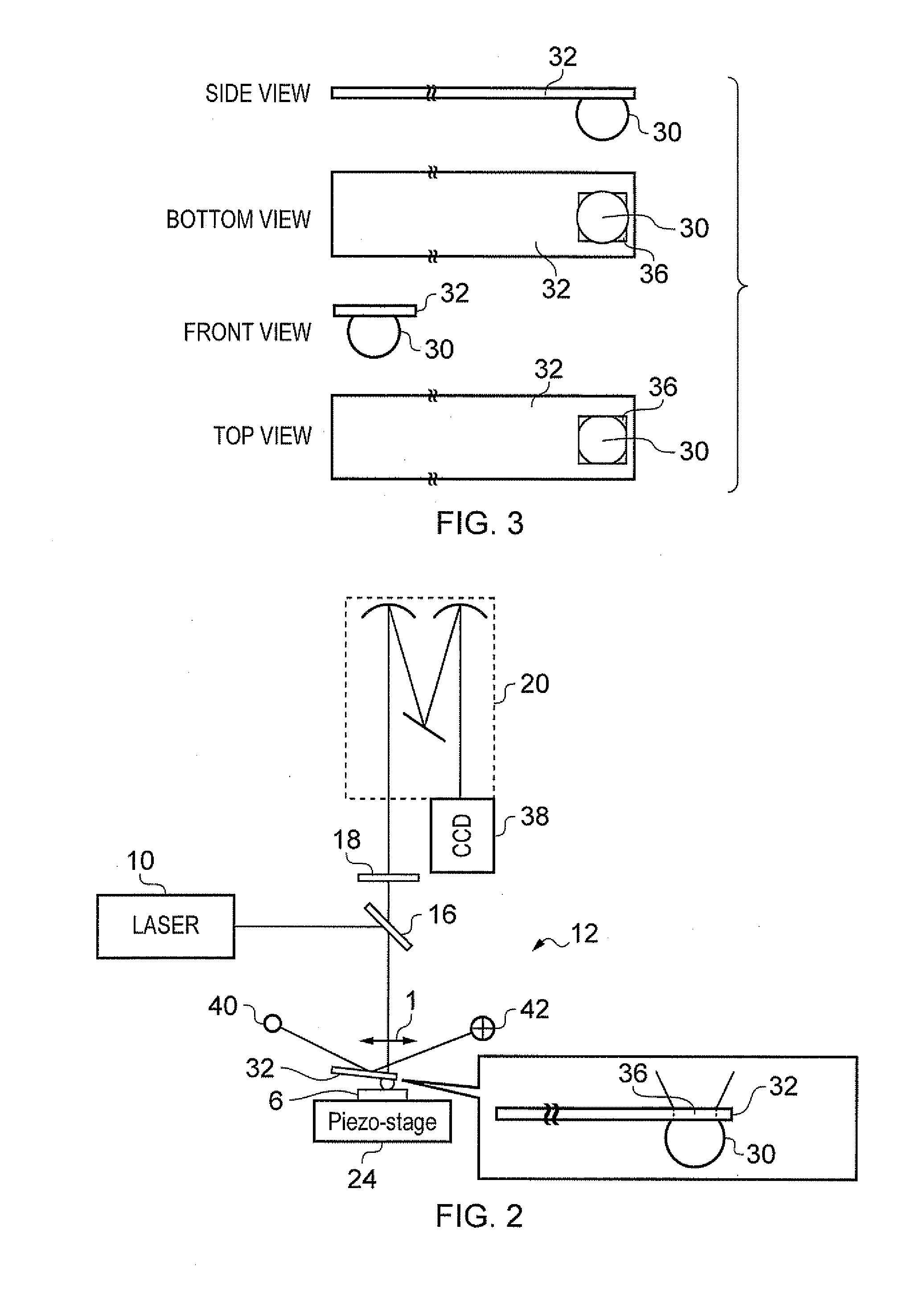Near-field Raman spectroscopy
a raman spectroscopy and near-field technology, applied in the field of spectroscopy, can solve the problems of low resolution and inability to use water-sensitive samples
- Summary
- Abstract
- Description
- Claims
- Application Information
AI Technical Summary
Benefits of technology
Problems solved by technology
Method used
Image
Examples
Embodiment Construction
[0022]We have developed a new approach to near field, whereby the laser is focused to a spot size smaller than diffraction limit by a dielectric microsphere. In the embodiment of FIG. 1, besides being used as the excitation source for Raman spectroscopy, the incident laser beam (linearly polarized Gaussian TEM00 mode) is also used to hold the microsphere just above the sample surface, through the well-known optical tweezer mechanism. See Ashkin, A., “Applications of laser radiation pressure”, Science 210, 1081-1088 (1980) and Ashkin, A. “Optical trapping and manipulation of neutral particles using lasers”, Proc. Natl. Acad. Sci. USA 94, 4853-4860 (1997).
[0023]The diameter of the dielectric microsphere is comparable to the wavelength of the laser. Simulation studies have shown that sub-diffraction limited focusing can thereby be achieved, with improved spatial resolution due to the near field effect. See Xu Li et al, “Optical analysis of nanoparticles via enhanced backscattering faci...
PUM
 Login to View More
Login to View More Abstract
Description
Claims
Application Information
 Login to View More
Login to View More - R&D
- Intellectual Property
- Life Sciences
- Materials
- Tech Scout
- Unparalleled Data Quality
- Higher Quality Content
- 60% Fewer Hallucinations
Browse by: Latest US Patents, China's latest patents, Technical Efficacy Thesaurus, Application Domain, Technology Topic, Popular Technical Reports.
© 2025 PatSnap. All rights reserved.Legal|Privacy policy|Modern Slavery Act Transparency Statement|Sitemap|About US| Contact US: help@patsnap.com



